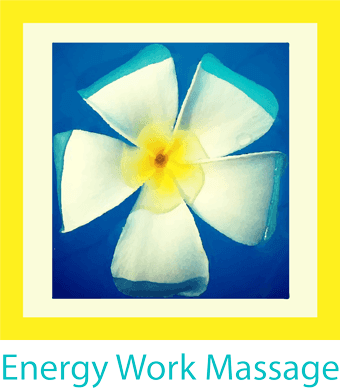Massage services
Narelle will use a wide variety of techniques to match the individual patient. If you have had a technique before that has worked, then please ask her to apply it. She takes a gentle approach and prides in explaining everything she does in advance. Over her career, Narelle has developed her passion for human anatomy and physiology. Because of this dedication, she specialises in many types of massage including:
Continue reading below for more information about our most popular massages.
Remedial massage
Remedial massage is effective in treating a wide range of conditions and ailments, such as, but not limited to:
- Neck pain
- Back pain
- Tension headache
- Jaw pain
- Frozen shoulder
- Arthritis
- Sciatica
- Tennis elbow
- Plantar fasciitis
- Stress
- Muscular spasms
- Muscle cramps
- DOMS (delayed onset muscle soreness)
- What frequency works best for a remedial massage?
Trigger point therapy
Trigger point therapy is a form of remedial massage therapy in which direct pressure is applied to specified points on tender muscle tissue to bring about a reduction in muscle tension and pain relief.
- What activates a trigger point?
Each muscle has potential trigger points which can become activated by muscle overuse, inflammation, trauma, electrolyte imbalances, infections and nerve pain.
These trigger points can cause pain over the muscle affected or refer pain and thus be felt in another area of the body. Other trigger points are only felt when the muscle is directly palpated by the therapist.
The taut bands of muscle that accompany trigger points are often easily identified on palpation. Pain can quickly be minimised with sustained compression on the affected tissue for 30 to 90 seconds. Some discomfort may be experienced when the compression is applied but the therapist will position the muscle to minimise the discomfort until such time it subsides completely.
- What conditions benefit from trigger point therapy?
Hot rock massage
The benefits of hot rock massage include increased circulation, increased oxygen, relaxation, reduced tightness and elimination of toxins. Drink plenty of water after the massage to flush these toxins away. Additional benefits include the opening of lymph glands and a more pliable body which can be used to enhance massages.
- What to expect
Hot rocks can access deep tissues without causing pain and makes the body more pliable. This form of massage can be combined with other treatments such as sports massage and remedial massage for enhanced benefits.
Let your therapist know if the rocks are too hot for you. She can always adjust to suit your taste. The heat gets absorbed quickly into the body and goes to where it is needed, so she will be keeping the stones as hot as you can handle it. Hot rock massage comes from Hawaii. They call it Pohaku Wela Wela. Pohaku which means stone and Wela means hot. Combined, Pohaku Wela Wela means very hot stone.
Deep tissue massage
- Will a deep tissue massage hurt?
It should not hurt. It is likely to be a bit more uncomfortable than a light Swedish massage, especially if you have some large chronic knots. Can adjust to your comfort.
- How fast will I get results with a deep tissue massage?
Most people report unbelievable relief immediately after their first deep tissue massage.
- What can help reduce soreness?
It is hard to gauge just how firm your first deep tissue massage should be, so let your massage therapist know if it feels too hard. In fact, undoing chronic knots and tension over a lifetime are best achieved with an integrated program that includes exercise, posture work, relaxation techniques and regular massage program to retain your muscle tension habits.
Sports massage
Sports massage is done with the intention of returning you to your desired sports activity with the same or an even better level of functionality. Sports massages can include more aggressive techniques to reach deeper muscle tissue.
Sports massage will often utilise a variety of modalities such as remedial massage, trigger point therapy, cross fibre techniques and deep tissue work. Primarily, the difference lies with the specific injury.
- How does a sports massage differ from a regular massage?
Regular massages usually mean those treatments offered at beauty spas or relaxation clinics. Both environments offer valid treatments for overworked, stressed muscles.
However, sports massages and remedial massages differ in both their purpose and the techniques used. Whilst nearly all massage therapists can perform regular massages, only those with specific sports massage skills are adequately equipped to perform effective treatment.
The primary goal of recovery massage is to reduce the amount of recovery time required. However, the following are also important goals of the treatment:
- Reduce muscular tension
- Reduce immediate muscle soreness
- Prevent DOMS (delayed onset muscle soreness)
- Prevent injury
- Promote a state of relaxation
- Relieve increased muscle tone
- How can a sports massage help my physical sporting performance?
Kahuna massage
Kahuna massage is a therapeutic massage technique based on the teachings and practices of the ancient Hawaiian Kahunas. In the language of native Hawaiians, ‘Huna’ means ‘secret knowledge’. A master practitioner of any of the Huna arts is known as a ‘Kahuna’. Traditionally, massage (‘lomilomi’) was practised in the Hawaiian Islands both for relaxation and as one of the Kahuna healing arts.
The Kahuna massage technique is very vigorous and rhythmic. The practitioner uses his or her fingers, palms, wrists and even their forearms as they move rhythmically around the table. It has a deeply relaxing effect unlike a conventional massage.
- Benefits of Kahuna massage
Kahuna massage is said to stimulate the lymphatic, circulatory, respiratory and digestive systems, so it may be of therapeutic benefit for a variety of disorders. It is said to be particularly beneficial for a number of emotional problems including:
- Stress
- Depression
- Grief
- Exhaustion
- History of Kahuna massage

Therapeutic massage
Massage therapy may also improve your circulation. This enhances the delivery of oxygen and nutrients to muscle cells and helps remove waste products or reduce swelling. These circulatory effects of massage may have value in the treatment of some inflammatory conditions, such as arthritis.
Massage therapy induces a relaxation response, which lowers your heart rate, breathing rate and blood pressure. Plus, it boosts your immune system and generally decreases the physical effects of stress.
These effects suggest that massages may be helpful for a wide range of conditions.
- What conditions benefit from a therapeutic massage?
Massage therapy helps your body in numerous ways. Massages can relax muscle tissue, which may lead to decreased joint and nerve compression, increased joint and muscle range of motion. This commonly results in less pain and improved function.
- Therapeutic massage benefits the following conditions
- Stress
- Anxiety
- General well being
- High blood pressure
- Arthritis
- Low immunity
- Minor injuries
- When are the best times for a therapeutic massage?
The best time for a therapeutic massage is when you feel yourself getting worked up or when you are just not feeling your best.
Others find a regular therapeutic massage every month or two to be a great dose of prevention therapy.
- What duration is the best for a therapeutic massage?
If you have never had a therapeutic massage before or it has been quite some time since your last massage, then your initial treatment should ideally be for 60 to 90 minutes so that the therapist can work through those tired muscles at an even pace. This is to minimise any possible soreness the following day.
Relaxation massage
Swedish massage
Swedish massage is probably the most well-known form of relaxation massage.
While a relaxation massage is wonderful for you, it is less effective than deeper forms for reducing soft tissue tension. We normally recommend deeper styles when you are suffering from pain. Many choose a relaxation massage when they just want to relax!
Please discuss your needs with your massage therapist. They will be happy to tailor a massage solution for you that combines a relaxation massage with other styles that address your issues.
Pregnancy massage
- What are the benefits of a pregnancy massage?
- Reduces stress & anxiety about the pregnancy
- Relaxes sore back & hips
- Reduces headaches associated with pregnancy
- Aides restless legs
- Helps with sleep deprivation & tiredness
- How does a pregnancy massage help me?
Fully licensed and accredited to provide you with superior relaxation
Massage fees
A single 1-hour session is $100. Energy Work Massage provides health rebates. HICAP machine available. Narelle is equiped to accept EFTPOS or cash. 24 Hours notice is needed for cancelations.
Schedule a massage
Give her a call today to schedule a massage or to ask her any questions you may have.





















